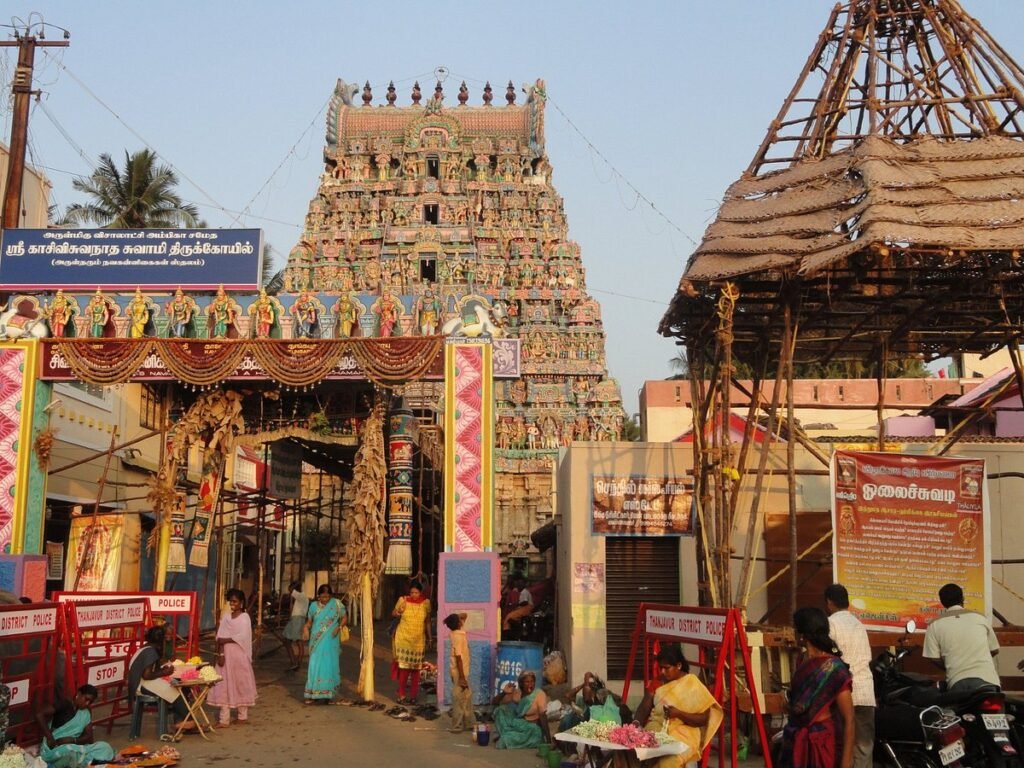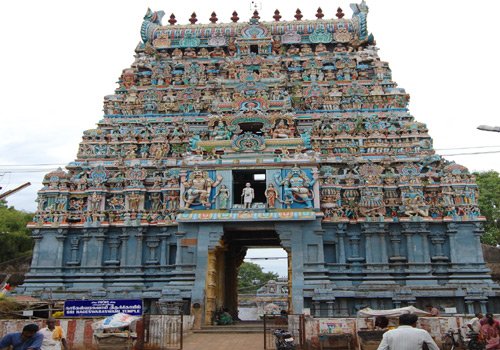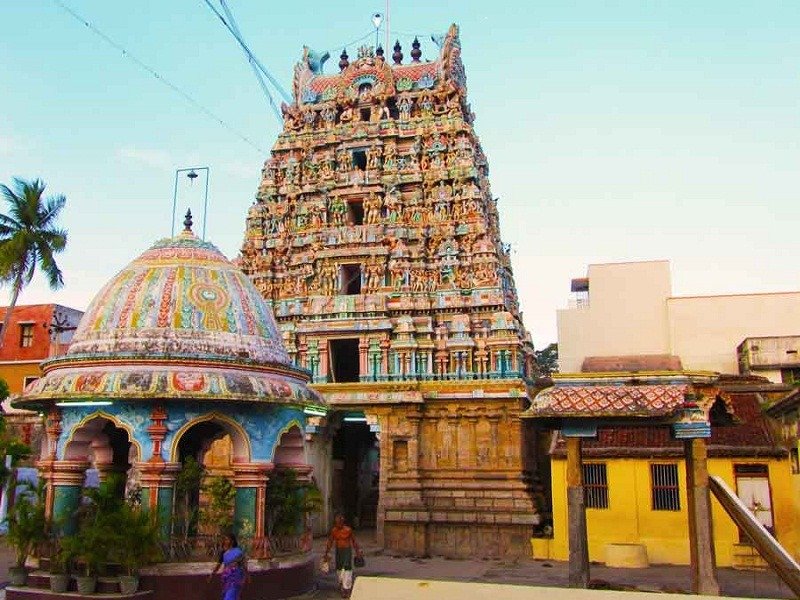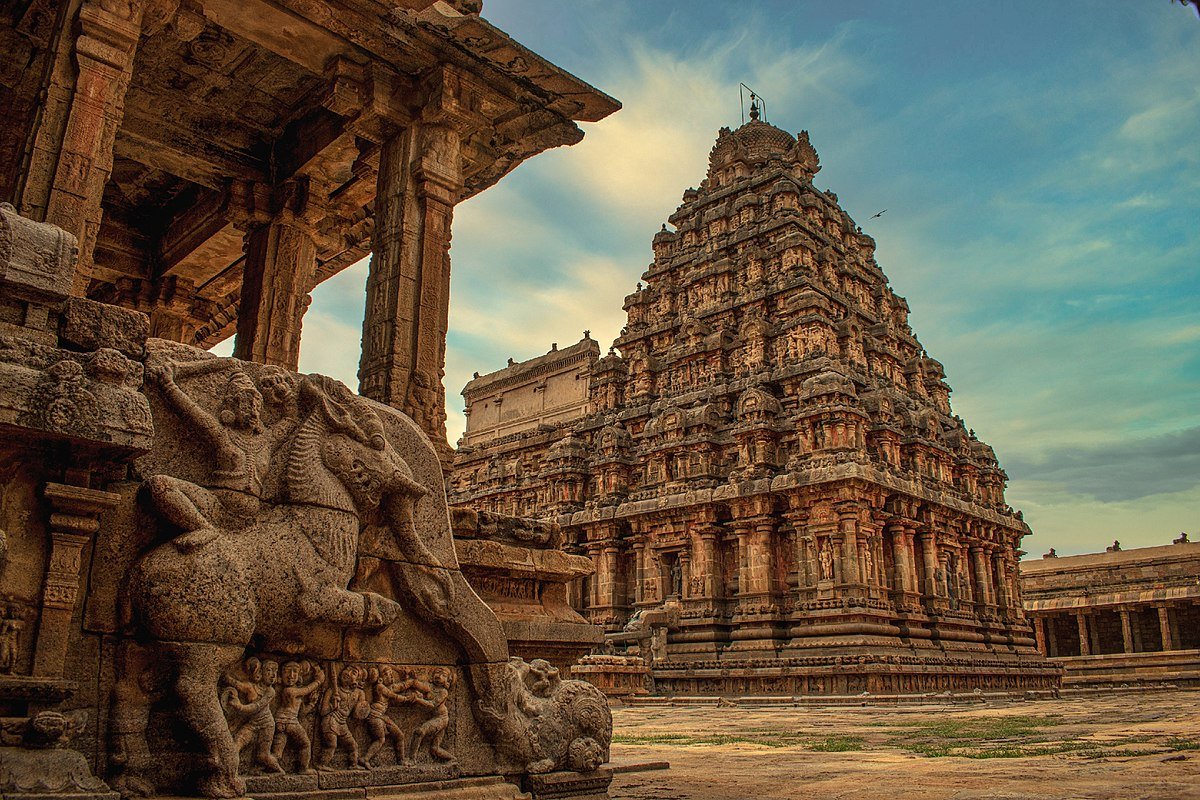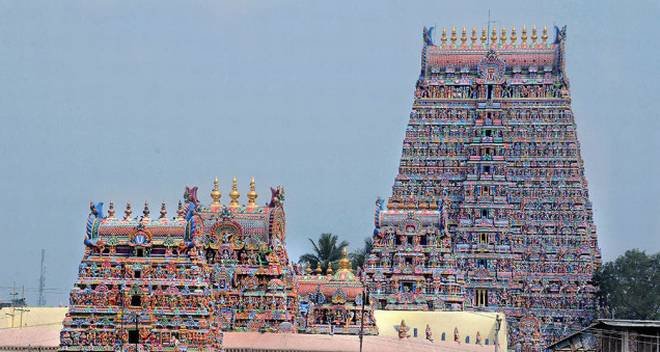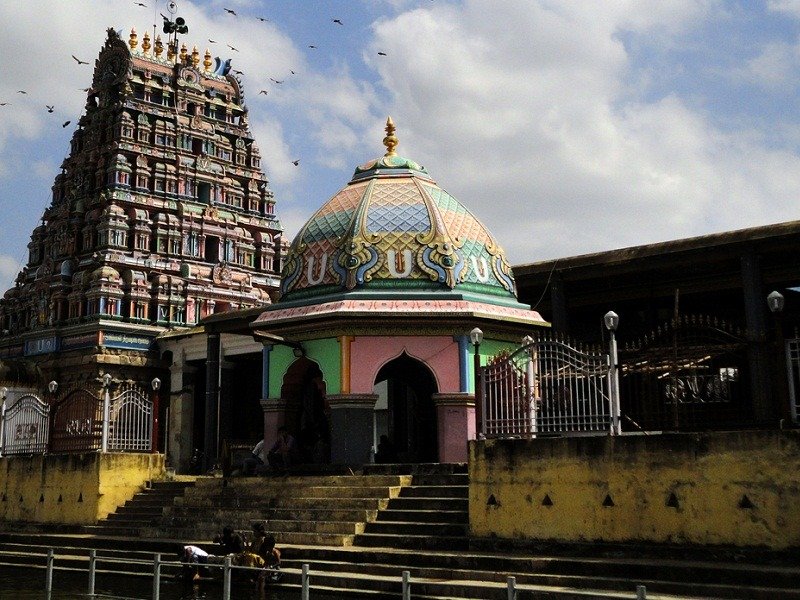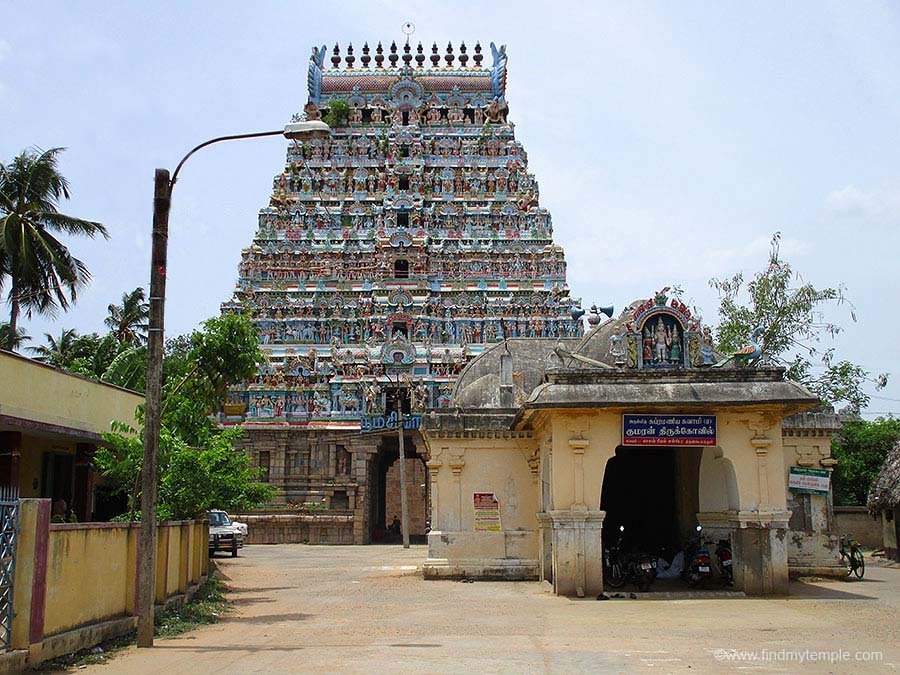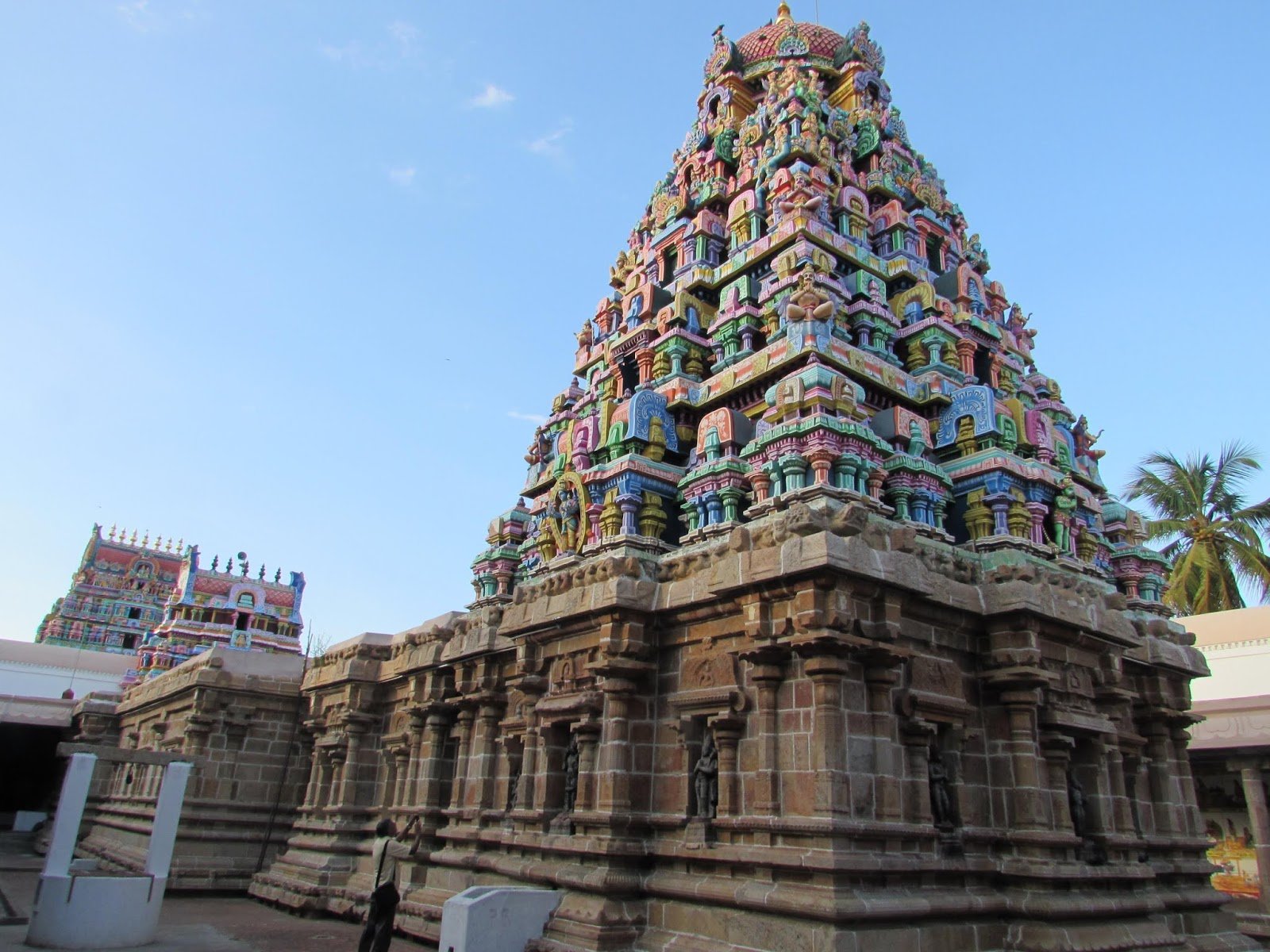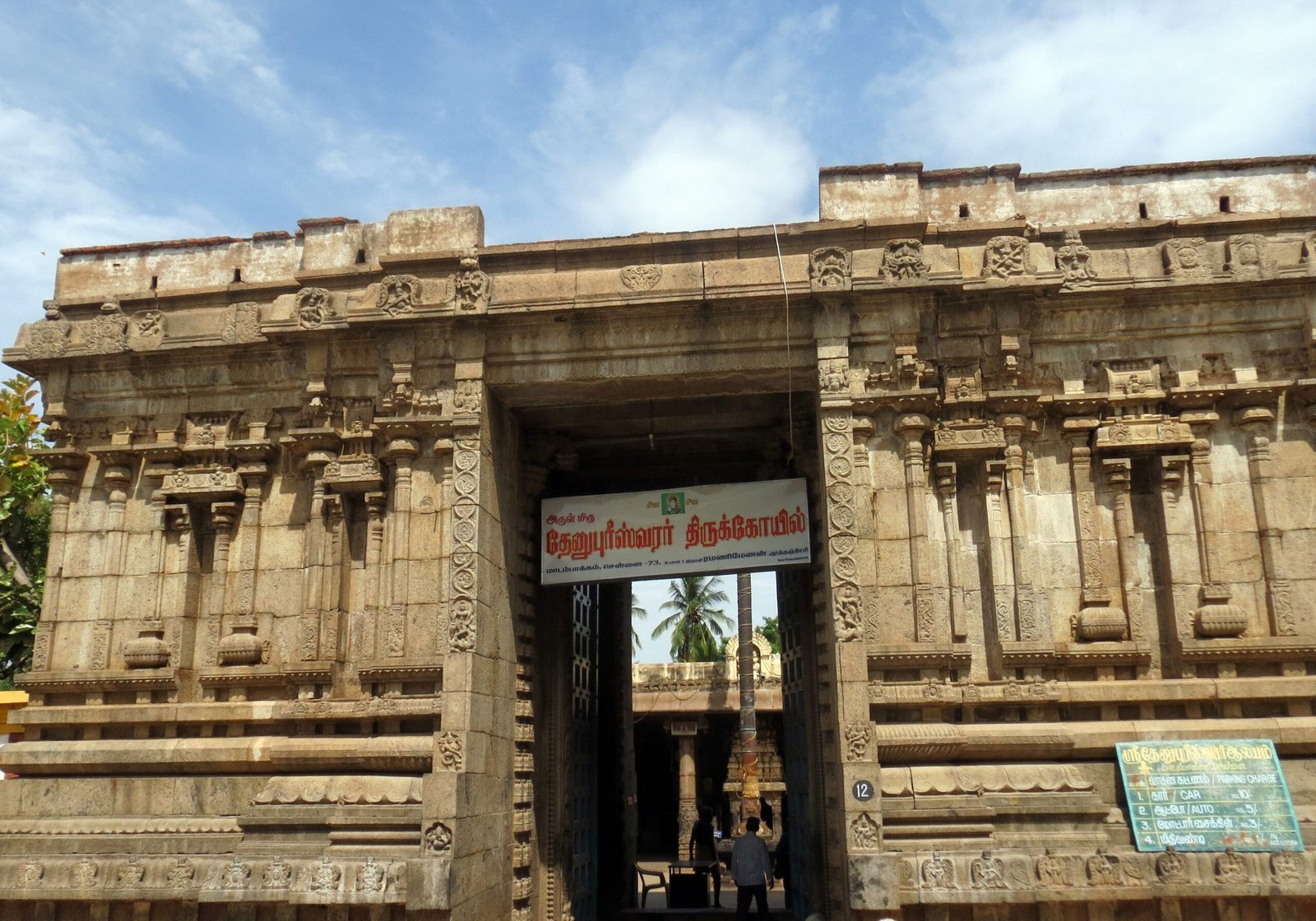In the Thanjavur district of Tamil Nadu, Kumbakonam is one of the ancient temple towns and one of the most popular tourist destinations in India. It is bounded by the two rivers Cauvery and Arasalar. The Pot’s Corner is the meaning of Kumbakonam. When the world was destroyed by the tsunami, Lord Brahma asked Lord Shiva where he could restart creation, according to myth. He suggested that he use the sand from various sacred places to make a magic pot and float it in the floodwater. The pot came to a stop at Kumbakonam, where Lord Shiva fired an arrow, spilling some nectar there, bringing life back to the earth.
Between the 7th and 9th centuries AD, Kumbakonam rose to prominence as a city once ruled by kings. During the British Raj, the town was at its most prosperous, and it was dubbed “Cambridge of South” because it was a major center for European education and Hindu culture.
Why visit Kumbakonam?
The magnificent temples and architecture of this region demonstrate the splendor of Tamil Nadu. Lord Vishnu and Lord Shiva are the subjects of many of the religious buildings in Kumbakonam. Kumbakonam has around 188 locations. The town is famous for its prestigious schools, carved Panchaloha idols, silk products, brass and metal wares, and other items. Additionally, the temples here are well-known for their magnificent pillars, imaginative wall drawings, and mythological tales.
Temples To Visit In Kumbakonam
1. Kasi Viswanathar Temple
The Kasi Viswanathar temple is right in the middle of the city, right next to the well-known Mahamaham Tank. It is dedicated to Lord Shiva and is one of the most prominent religious sites. In the 16th century, this temple with a height of 72 feet was built. Here, Kasi Viswanathar is the name of the deity, and Visalakshi is his wife. There are also additional shrines. Legend has it that Lord Rama and Lakshmana prayed to Lord Shiva here and received the blessing to kill Ravana. In addition, there are nine rivers that are referred to as Nava Kannigas. These people prayed to Lord Shiva at Varanasi to have their sins washed away by bathers. They were instructed to pray to Lord Adi Kumbeshwara and take a bath in the Mahamaham tank by the Lord.
Mahamaham is a well-known festival that takes place once every 12 years. It is believed that dipping oneself in the holy tank will cleanse one’s soul and wash away one’s sins. The most significant festival, Masi Magam, is celebrated in the months of February and March.
2. Adi Kumbeswara Swami Temple
This temple, which was built in the 9th century by the Chola dynasty and is dedicated to Lord Shiva, has a lingam that looks like a needle and is wide at the bottom and narrow at the top. It is believed that Shiva himself created this Lingam. The Goddess Manthrapeeteswari Mangalambika shrine, dedicated to the Lord’s consort, can be found to the left of Kumbeswarar shrine.
The Kumbeswarar Temple is a masterpiece of architecture that is typical of the Dravidian style. It is a single, massive temple that has nine stories and a height of 128 feet.
The fact that this temple has a 27-star sign and 12 zodiacs carved from a single large block of stone is a one-of-a-kind feature. This speaks volumes about the masons’ engineering abilities in the past. This temple also contains shrines to Muruga, Kiratamurti, and Ganapati.
3. Nageswaran Temple
The Nageswaran Temple, which Aditya Chola constructed in the ninth century, is renowned for its outstanding architecture, building technology, and astronomy. This beautiful kumbakonam temple is known as Surya Kottam Temple because it is constructed so that sunlight can only fall on the idol for three days in April or May. During these three days, devotees from all over the world flock to the temple to seek the deity’s blessings.
One of the religious sites dedicated to Lord Shiva, the serpent king, is this temple. The temple is said to have been given the name Nageswaran because one serpent was seen worshiping the lingam.
4. Chakrapani Temple
This temple, dedicated to Lord Vishnu, has the name Chakrapani Lord Vishnu and is shaped like a disc, or Chakra.
Legend says that Sudarshana Chakra was sent to Patal Lok by Lord Vishnu to kill the demon Jalandasura, and he got there by crossing the Cauvery River. Sudarshana Chakra was installed here by God Brahma, who was bathing in the river.
The Lord is worshipped by a bronze idol of King Serfoji II; who experienced illness relief. It is believed that people with mental or physical problems or illnesses can be cured here. Here, Lord Vishnu was worshiped by the Sun God. As a result, people who are having issues in their lives because of Shani, Rahu, or Ketu Dosh should pray to Lord Chakrapani.
One of the Vishnu temples that participate in the Mahamaham festival is this one.
5. Airavathesvara Temple
Built in the 12th century by Rajaraja Chola II, this temple is one of the religious sites included in the UNESCO World Heritage Site. Periya Nayaki Amman, the consort of the deity, has a temple nearby. It has a vimana that is 85 feet high, a front mandapam with a huge chariot, and some beautiful stone carvings. It is known as a storehouse of art and architecture.
According to legend, Lord Siva was worshipped in this temple by Airavata, the white elephant of Indra and the King of Death, Yama.
6. Sarangapani Temple
It is named after the Sanskrit words “Sarangam,” which means “Bow of Vishnu,” and “Pani,” which means “hand.” It is dedicated to Lord Vishnu. This is one of the most important religious sites that the Nayak Kings built in the 16th century. It has a 12 story Gopura that is 150 feet high, making it the tallest temple tower in Asia.
The temple’s central shrine is shaped like a heaven-bound chariot pulled by horses and elephants. The posture of the deity is depicted as if he is rising from a reclining position. Five prakaras and a holy tank known as Porthamarai Kulam are featured in the temple. It is believed that a thousand lotuses brought Goddess Lakshmi from the Potramarai tank to this location.
This temple celebrates a significant festival, the spring chariot festival. The third of the 108 Divya Desams, Sarangapani Temple is the largest Vishnu temple in Kumbakonam.
7. Uppiliappan Temple
It is one of the most important religious sites in Kumbakonam and is ranked 60th among the 108 Divya Desams that are dedicated to Lord Vishnu. The Medieval Cholas are said to have built the temple toward the end of the 8th century AD. The Lord, according to myth, appeared to Markandeya as an elderly man and proposed to Bhoomidevi, his daughter. Markandeya claimed that his daughter is too young to cook and doesn’t even know how to use salt in the kitchen. Lord Oppilliappan tied the knot with Bhoomidevi in this location after the Lord responded that he would eat food even without salt. As a result, the temple is called Uppiliappan, and the prasad cooked here never contains salt.
Uppiliappan and Bhoomidevi are the names given to Lord Vishnu and his wife Lakshmi in Hinduism. The Lord’s 8-foot-tall idol, Bhoomidevi to the right, and Markandeya Maharishi to the left, can be seen. Because the lord is also referred to as Lord Venkateshwara’s brother, devotees who are unable to travel to Tirupati in order to fulfill their promises are welcome to do so here.
During the months of September and October, the temple holds a grand celebration of Brahmotsavam.
8. Mahalingaswamy Temple
Since this Shiva Lingam is a swayambhu (self-manifested), it attracts a large number of devotees throughout the year. To please Agastya and the other sages who were doing penance, Shiva appeared as a flame; This is why the god is called Jyothirmaya Mahalingam.
On the right side of the main shrine is the Ambal Shrine, one of the Sakthi Peetams. One of the most fascinating religious sites is associated with the temple, which has five tanks and 27 additional water bodies.
9 Ramaswamy Temple
This temple, also known as the southern Ayodhya, was built in the 16th century CE and is dedicated to Lord Rama, an incarnation of Lord Vishnu. There are 219 wall paintings and some famous stone carvings in the temple that explain the events from the great epic Ramayana. We can only see Hanuman, Bharatha, Shatrughna, and the idols of Rama, Sita, and Lakshmana in this temple.
There is a lavish celebration of Rama Navami. One of the five Vishnu temples associated with the Mahamaham festival is also located here.
10. Dhenupureeswarar Temple
Although it is one of the largest and most significant religious sites dedicated to Shiva, Goddess Durga, the temple’s guardian deity, is the most well-known deity. Numerous mythological tales have made the temple famous.
Patti, the divine cow Kamadhenu’s daughter, is said to have offered worship to Lord Shiva here, according to legend. At this location, Sage Viswamitra was given the title of Brahma Rishi. It is said that Sri Rama prayed to Shiva here to forgive himself for his sins.
Nandi is said to have been asked to step aside by God Shiva so that he could see Sambandar when he visited this temple. Nandi is not depicted in a straight line with the sanctum sanctorum because of this.
The well known as Koti Theertham, which is close to Rameswaram and was built by Lord Rama, is compared to Dhanushkodi. Devotees who have Rahu and Kethu dosh frequent this temple.
This temple celebrates important festivals like the Vaikasi, Navarathri, and Muthu Pandal festivals, which last ten days and are held annually in December and January.


